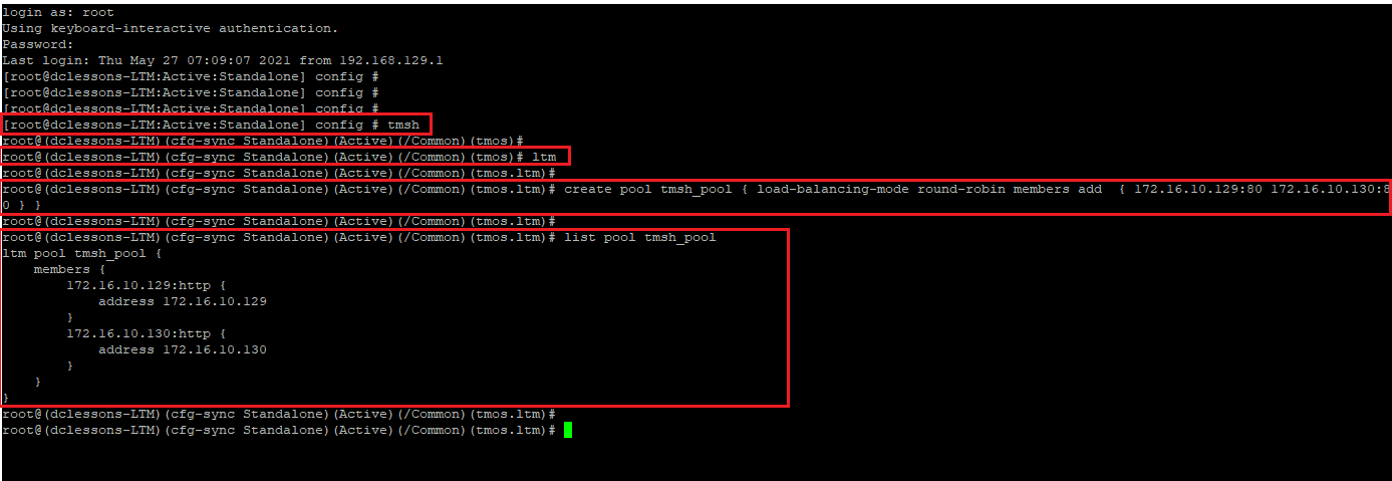EMAIL SUPPORT
dclessons@dclessons.comLOCATION
USUnderstanding Hierarchical Structure of tmsh
F5 has the hierarchical structure in tmsh, below are its structure.
tmos: This is the highest level of hierarchy, often called as root.
Modules: Under tmsh, there are different types of module depending upon versions of F5. There access depends upon provisioning & Licensing of system. Example are: ltm, gtm, asm, net, cm, sys.
Submodule: The modules described above also have sub module, like monitor, profiles etc.
Components: it represents actual configurable objects and are at bottom of hierarchy.
The tmsh Prompt
In order to access to tmsh prompt, Login to F5 and then under config, type tmsh, you will be in tmsh prompt.

Here you can determine following:
- root@: Name of the logged user
- dclessons-LTM): host name of device
- (cfg-sync Standalone): Device is configured in not in HA pair and config of device are in not in sync. sync required
- Active: The device in which you logged is Active one.
- (/Common): The Partition that tmsh is currently pointing to.
Now let’s understand the tmsh commands by using some task.
Task 1: Use tmsh commands to configure following
- Create Pool and Virtual Server
- View and save the configuration files
- Create UCS Archive
Use below commands to create the Pools and verify its status.
Creating tmsh_pool and viewing its status.
Refer below figure to configure the pool.

Here we have created tmsh_pool and have added two members ( 172.16.10.129 172.16.10.130 ) listening to port 80.
Here we are also listing the tmsh_pool.





LEAVE A COMMENT
Please login here to comment.